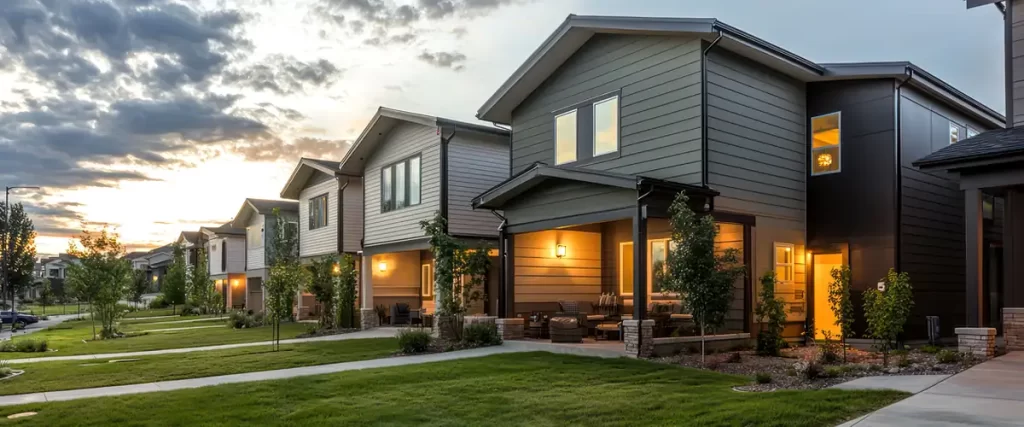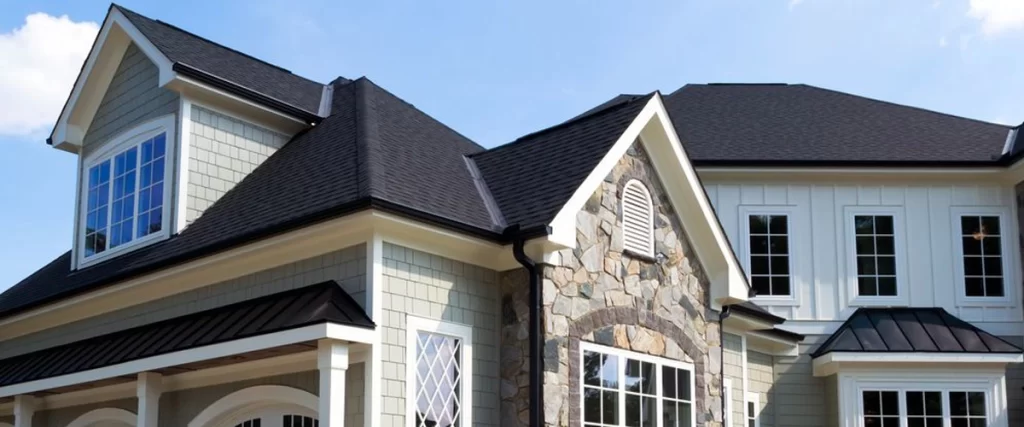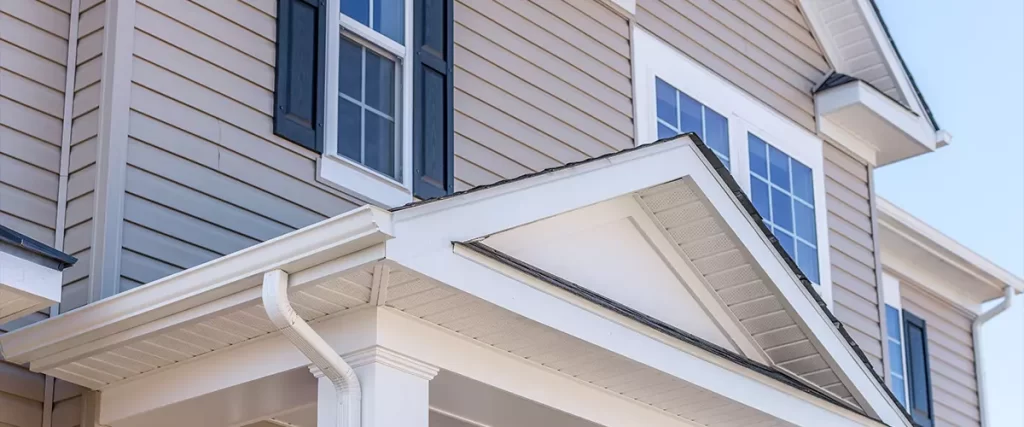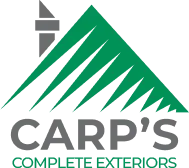Choosing the right siding is one of the most important parts of any exterior renovation. For many homeowners, the conversation often turns to James Hardie vs LP SmartSide. Both siding materials offer solid protection, visual appeal, and long-term value. But they aren’t the same.
Each siding product has unique strengths and trade-offs. If you’re starting a new siding installation, understanding the differences between fiber cement and engineered wood can help you make a confident decision that fits your home, climate, and budget.
James Hardie vs LP SmartSide
| Feature | James Hardie | LP SmartSide |
| Material | Fiber cement | Engineered wood |
| Look | Clean, uniform | Natural wood texture |
| Fire Resistance | Yes | No |
| Pest Resistance | High | High (zinc borate) |
| Moisture Control | Excellent | Good (needs sealing) |
| Durability | Long-term, very stable | Strong, lighter build |
| Maintenance | Minimal | Low to moderate |
| Install Time | Longer | Faster |
| Cost | Higher | Lower |
| Warranty | 30 years | Up to 50 years |
What Are They Made Of?
James Hardie siding is a fiber cement product made from portland cement, cellulose fibers, and sand. This blend creates a tough, durable board that resists moisture and damage from fire and pests. It’s designed for performance in extreme weather and has a solid feel once installed.
LP SmartSide siding is engineered wood. It’s made from wood strands coated with wax and bonded using a quality cement patching compound and zinc borate for pest resistance. The result is a strong, lightweight panel with a natural wood look and texture.
Both James Hardie and LP SmartSide siding aim to mimic traditional wood siding but without the downsides of frequent maintenance and weather vulnerability.

Appearance and Style Options
Hardie siding has a clean, uniform appearance. The factory-applied paint options maintain their look for years with minimal touch up paint needed. The surface has a consistent wood like texture and comes in several formats like lap siding, shingle siding, and vertical panels.
LP Smart Siding leans into the authentic wood style. The cedar texture is deeper and more prominent, giving the feel of cedar siding or even cedar shingles. It accepts matching paint or stain easily, which appeals to those who want full control over color selection.
Available options for both include:
- Panel siding
- Vertical siding
- HardiePlank lap siding
- Trim boards and soffits
- Shingle siding panels
No matter your home’s exterior design, both siding products have a wide enough range to match the look you’re going for.
Durability and Weather Performance
James Hardie siding is known for long term durability. The fiber cement blend resists swelling, cracking, and warping, even in freeze-thaw cycles or humid climates. It’s fire resistant and not prone to termite damage or rot.
LP SmartSide siding also holds up well. The zinc borate treatment adds pest resistance, and the panels are impact-resistant. However, because it’s an engineered wood siding product, it can be more sensitive to moisture if not properly installed, especially near the ground.
In places like Omaha, where summers can be hot and storms intense, fiber cement siding is often preferred for its stability during temperature swings and resistance to mold and mildew stains.
Maintenance Requirements
Both products are considered low-maintenance compared to traditional wood. But there are a few differences in how they age and what they need.
James Hardie offers products with baked-on finishes that don’t fade easily. Routine maintenance involves rinsing off dust or dirt with a garden hose or pressure washer. Stubborn stains like mildew can be treated with mild soap. Repainting isn’t needed often.
LP SmartSide usually needs less frequent maintenance than wood siding, but more than fiber cement. Paint may wear faster over time, and it’s more susceptible to water-related issues at vulnerable joints or where landscaping stays damp.
In general:
- Fiber cement siding holds paint longer
- Engineered wood is easier to cut and repair
- Both need proper spacing and sealing at joints
Fire, Moisture, and Pest Resistance
James Hardie siding is non-combustible. It doesn’t burn, making it an excellent choice for fire resistance. It also won’t rot, swell, or host mold growth if moisture does reach it.
LP SmartSide is treated for pest resistance and performs well under normal conditions, but it can’t match the fire-resistant properties of fiber cement.
For homes where fire safety, moisture resistance, or long-term pest control are priorities, hardie board generally performs better over time.

Installation and Labor
LP SmartSide siding is easier to install. It cuts with standard tools, produces less dust, and weighs less per square foot. That can reduce installation costs and speed up the process.
Hardie siding requires more labor. It’s heavier, needs specialized cutting tools, and can be more brittle at the edges until it’s mounted. Professional installation is essential, especially to maintain the warranty.
Contractors often point out that LP SmartSide siding tends to go up faster, which means shorter project times and fewer interruptions for homeowners. But they also note that installing fiber cement siding like James Hardie, when done right, offers a more solid, long-term result. Each product has its quirks, and experience with the specific material makes all the difference.
Warranty Coverage
Both James Hardie and LP SmartSide offer strong warranty coverage.
- James Hardie includes a 30-year replacement warranty for siding and a 15-year finish warranty
- LP SmartSide provides up to 50 years of limited warranty coverage, depending on the product
Warranty terms depend on the product being properly installed according to each manufacturer’s specifications. Be sure your contractor understands the installation process and has experience with both.
Cost and Long-Term Value
LP SmartSide siding tends to cost less per square foot than fiber cement. It also takes less time to install, reducing labor expenses.
Hardie board has a higher initial cost, but that’s balanced by lower upkeep over time. It typically requires fewer paint jobs, offers better protection, and holds up longer in tough weather. Many homeowners find it offers better long-term value for the price.
From a budgeting perspective, some homeowners choose to use LP SmartSide for trim and accents, while using fiber cement for the main siding areas. The balance helps lower overall installation costs without compromising key areas of performance.
Environmental Impact
Engineered wood siding like LP SmartSide is made from renewable resources. The wood strands are sourced from managed forests, and the manufacturing process uses less energy than cement production.
Fiber cement siding, on the other hand, requires more energy to manufacture. However, its long lifespan and minimal maintenance reduce the need for replacement, which may offset some of the initial environmental impact.
Homeowners focused on sustainable building often weigh this trade-off carefully when deciding on the best siding for their project.
Regional Siding Trends
In the Midwest, especially in areas like Omaha, james hardie siding is increasingly common. Many homeowners are choosing James Hardie siding for its durability and performance in extreme weather. Contractors here are often certified in both James Hardie and LP SmartSide installation, giving homeowners flexibility.
LP SmartSide continues to be popular in more rural areas or on farm-style homes where a natural wood appearance is preferred. It also remains a go-to choice for homes where lighter siding makes sense structurally.
Real Feedback From Homeowners in 2025
This year, we’ve spoken with dozens of homeowners who have had recent siding work done.
One family chose LP SmartSide because they loved the cedar texture and wanted full control over custom colors. They said the siding gave their ranch-style home the exact rustic charm they were going for.
Another couple chose James Hardie siding after dealing with rot and mildew on their old vinyl siding. Their home is now noticeably quieter inside, and they haven’t had to worry about repainting in three years.
A contractor we work with frequently noted that both products hold up well, but he sees fewer service calls for Hardie board over time. He also mentioned that while LP SmartSide is easier to work with, mistakes in siding installation tend to show up sooner if details like flashing and sealing are skipped.

Choosing The Right Siding Material
Sorting through siding materials takes time. Understanding the differences in installation, performance, and maintenance can help. But if you’re feeling uncertain, we can walk through it with you.
Our siding contractor install both James Hardie and LP SmartSide. Our team has worked on hundreds of homes across Omaha, and we know how these products perform in Nebraska weather.
Call us at (402) 651-1493 or Contact us to talk about your siding project. We’ll help you find the right siding without the guesswork.
